

Münster is a cosmopolitan city that can look back on more than 1200 years of urban history. Whether as a bishop's see, Hanseatic city, capital of the Prussian province of Westphalia, university city or modern regional centre - Münster has always played an important role for the region and far beyond. But Münster has made a name for itself in world history for one thing: as the city of the Peace of Westphalia. As a centre of science and culture, Münster also offers a wide range of museums, theatres and events. The city is also known as Germany’s cycling capital.
City of the Peace of Westphalia

© Presseamt Münster - Angelika Klauser The European powers negotiated for five years in Münster and Osnabrück until they were able to end the Thirty Years' War in Europe. 24 October 1648 was the official date of the peace treaty. This great event was celebrated from the summer of 1648 to the spring of 1649 with numerous state ceremonies and festive events - and Münster is still inextricably linked to this event today as the city of the Peace of Westphalia.
The conditions under which negotiations took place were extremely difficult: there was no armistice, hostilities continued uninterrupted and there were no internationally recognised and tested rules for such negotiations. The negotiations leading up to the Peace of Westphalia are therefore regarded as important milestones on the road to a European peace order and the development of today's international law.
Münster – like Osnabrück – is known worldwide as the city of the Peace of Westphalia. In April 2015, the European Commission honoured the town halls of Münster and Osnabrück as "Sites of the Peace of Westphalia" with the European Heritage Label. The Peace Hall, which was the scene of the invocation of the Spanish-Dutch Peace in 1648 as part of the Peace of Westphalia, was completely restored in early 2003. On 3 and 4 November 2022, it was once again the focus of world political events as the venue for the G7 meeting of foreign ministers.
Cycling capital
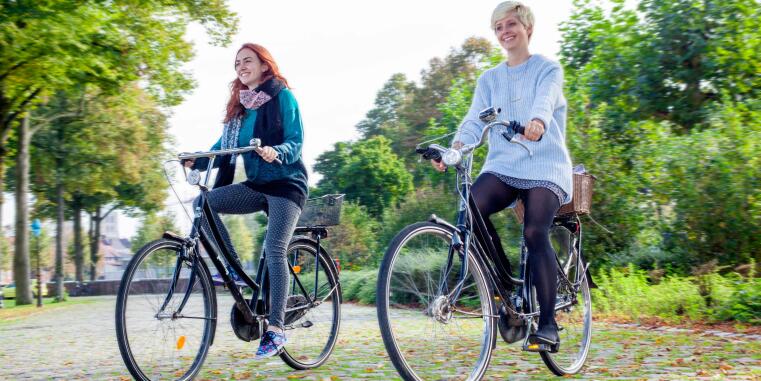
© Uni MS - Judith Kraft The bicycle, also known as Leeze, is the most frequently used means of transport in Münster: there are over 400,000 bicycles for 310,000 inhabitants. So if you want to experience the real Münster feeling, you should get on your bike here. Hardly any other city has such a well-developed network of bikeways and so many special cycling offers. The Promenade, a car-free ring road around the city centre for cyclists and pedestrians, is unique in Europe.
There are four “Radstationen” (bike stations) in Münster for secure bike parking. The bike station at the main railway station is the largest in Germany with 3,500 parking spaces. In addition to parking spaces, it offers a workshop service, bike hire and even a bike wash! Rental bikes are also available at the Münster Arkaden bike station for a spontaneous bike tour through Münster. A repair service and the sale of bicycle accessories complement the offer. The "bike depot" on Stubengasse has space for 360 bicycles. Shopping bags, rainwear and cycle helmets are safely stored in lockers. It's no surprise that Münster has often been recognised as the most bicycle-friendly city in Germany, most recently in 2023.
You can cycle easily through Münster on quiet, safe paths. And from here, special signs will guide you to excursions around the region: add a cycling trip to your visit, like the 100 Castles Route, for example, a cycle tour in the footsteps of the famous poet Annette von Droste-Hülshoff, or one of the two river routes WerseRadWeg and EmsRadweg.
Science city
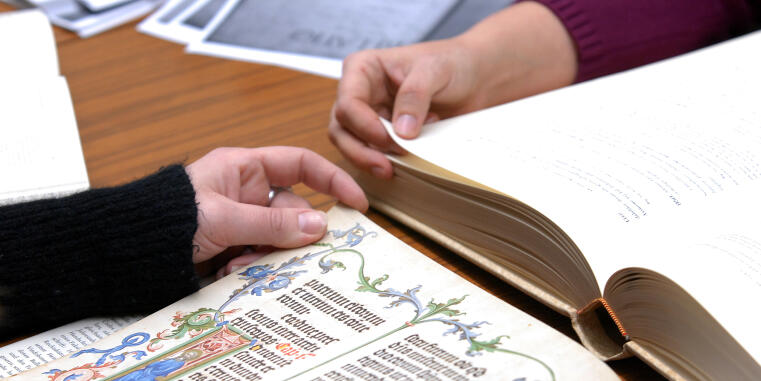
© Uni MS - Peter Grewer With a total number of 65,000, students play a major role in shaping the city of Münster. There are currently eleven universities and a large number of research institutes in and around Münster. The city itself is the campus, as the buildings of the various universities are spread across the entire city area of Münster.
Science and education are deeply rooted in Münster's DNA, which is also reflected in the wide range of research topics that are explored by a large number of research units and institutes. Münster University of Applied Sciences (FH Münster) is particularly well known for its specialisations in ecotrophology and design. The University of Münster has two clusters of excellence, “Religion and Politics” and “Mathematics Münster”, as well as many other strong research groups and collaborative research centres.
There are also a number of non-university institutes in Münster. The Max Planck Institute for Molecular Biomedicine, the Helmholtz Institute Münster (“Ion Conduction in Energy Storage”) and the Fraunhofer Research Centre for Battery Cell Production FFB. In addition, the university's large medical department, Münster University Hospital (UKM), is Münster's largest employer with many different excellent specialisms and is a very important institution in the city of Münster.
The “Alliance for Science” connects science, business and the city in a strategic network. The University of Münster, Münster University of Applied Sciences and the city administration work closely together to further promote Münster's profile as a city of science. The current focal points of this cooperation are: Dialogues on Peace – 1648, Public Health and Sustainable Urban Development and Education.
Crime thriller city
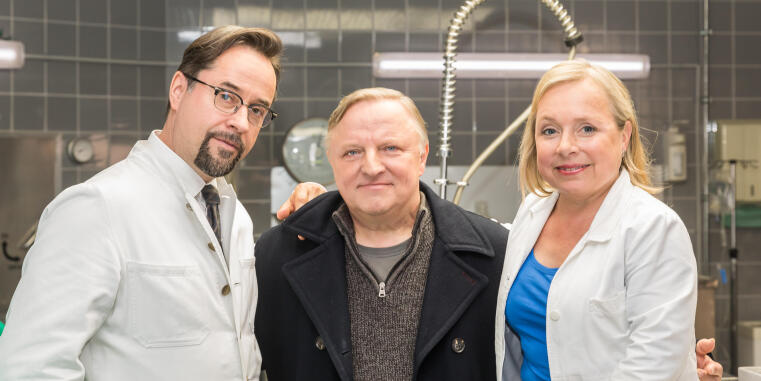
© Raimond Spekking – Wikimedia For several years now, three (fictional) investigators from Münster have been making life difficult for local criminals. The investigative duo from Münster, Axel Prahl as detective Thiel and Jan Josef Liefers as pathologist Professor Boerne, is German national TV-channel ARD's most successful "Tatort" (= “Crime Scene”) production with over 10 million viewers. But the investigations of private detective Wilsberg (Leonard Lansink) and his team also regularly captivate millions of viewers. So it's no surprise that there is a wide range of offers where you can follow in the footsteps of the famous investigators: from crime thriller travel guides to special city tours and crime thriller dinners.
Or you can stop by the Antiquariat Solder during a congress break for a souvenir photo in front of the Wilsberg film location: From the main entrance of the Philosophikum, follow the Aa for about 200 metres in a northerly direction and turn left at the Spiegelturm bridge onto Überwasserkirchplatz. You will then be walking directly towards the popular photo location at Frauenstraße 49/50.
Culinary city
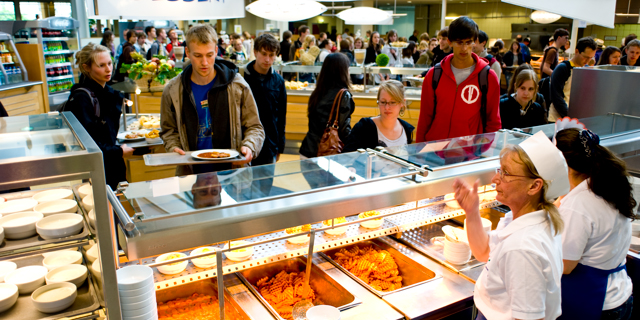
Would you like to get to know Münster with all your senses? Then savour it here! Enjoy regional specialities such as Töttchen, Pumpernickel and Westphalian ham on the bone, experience culinary delights on culinary city tours or let yourself be pampered by top chefs. Münster's gastronomy is like the city itself - full of interesting contrasts: rustic here, modern there, Westphalian down-to-earth with an international flair, tradition-conscious and at the same time keen to experiment. Connoisseurs will find the right restaurant for every taste - from “simply delicious” to “Westphalian and hearty” to “star-studded”. Visit the weekly market on the Domplatz on Wednesdays for typical Westphalian specialities and delicacies from all over the world. Bon appetit!
Liveable city
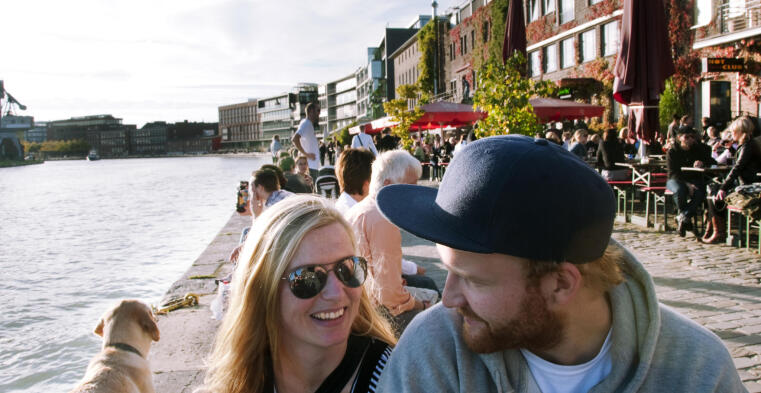
© Presseamt Münster/Angelika Klauser Münster is a city that is widely recognised for its high quality of life. Lots of greenery in the city centre, varied parks and a strong commitment to environmental and climate protection ensure that locals and visitors alike feel at home here. As a result, Münster is always on the winners' podium in national and international competitions.
Gold was awarded at the LivCom Awards in 2004, when Münster was named the "World's Most Liveable City" by the United Nations Environment Programme. There was also a gold medal in the Europe-wide Entente Florale competition, which Münster won in 2007. In 2006, Münster was honoured for the second time by Deutsche Umwelthilfe as the “Federal Capital for Climate Protection”. Münster received the European Energy Award in gold in 2005, 2009 and 2012 for its special climate protection projects.
With the title of “Europe's most beautiful park 2009”, Münster's Aaseepark, with its well-tended green spaces, secluded walking and cycling paths, modern sculptures and numerous places to take a break, was placed in a glorious row with last year's European winners: Pollock Country Park in Glasgow and the garden art of the Villa d'Este in Rome!
There are many feel-good places in the city. Why not take a stroll along the Promenade on your way to the congress or take advantage of good weather for a walk around the Aasee Lake or through the Botanical Gardens behind the castle. Trace the numerous legacies of the Sculpture Projects or relax at the Kreativkai at Münster harbour.


